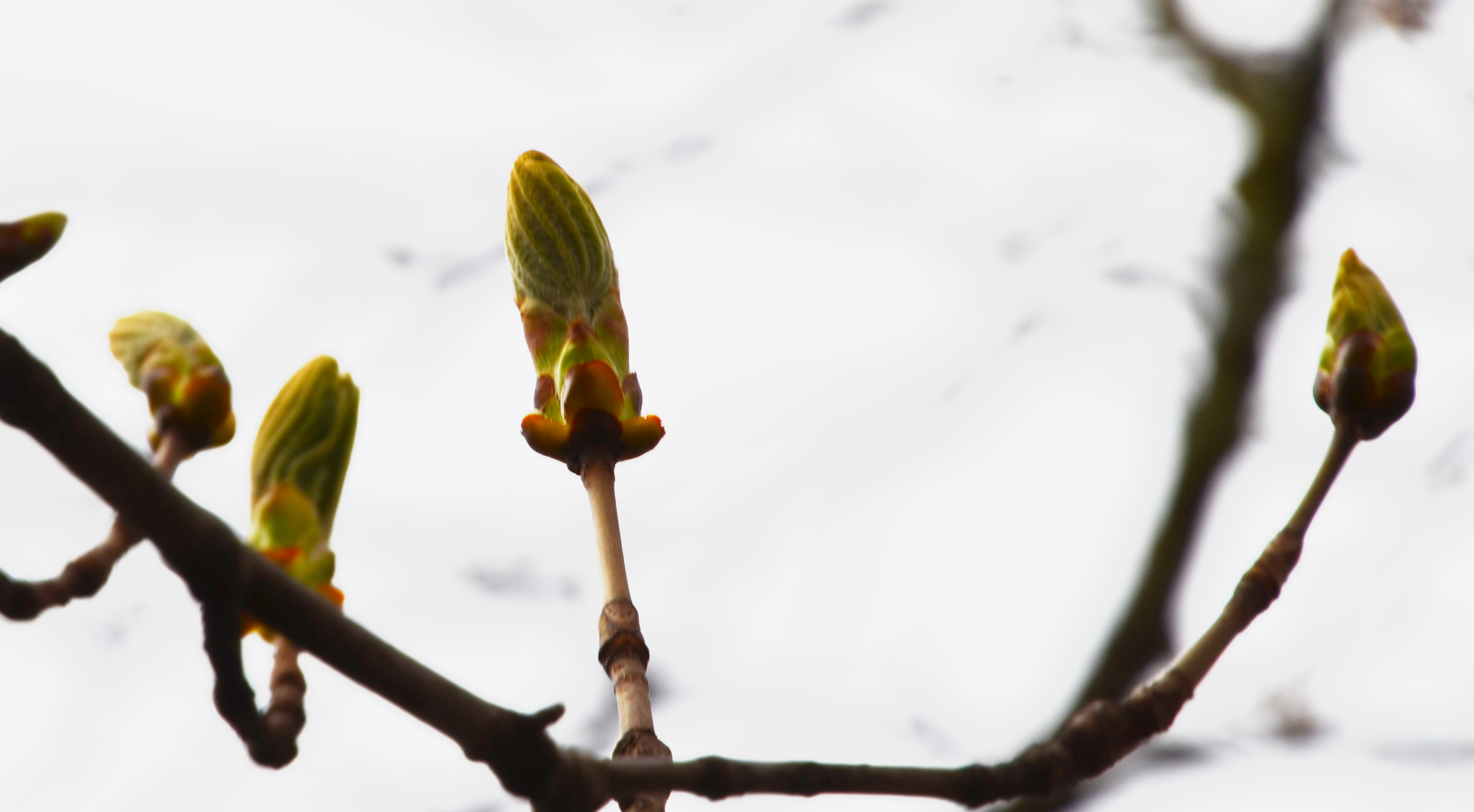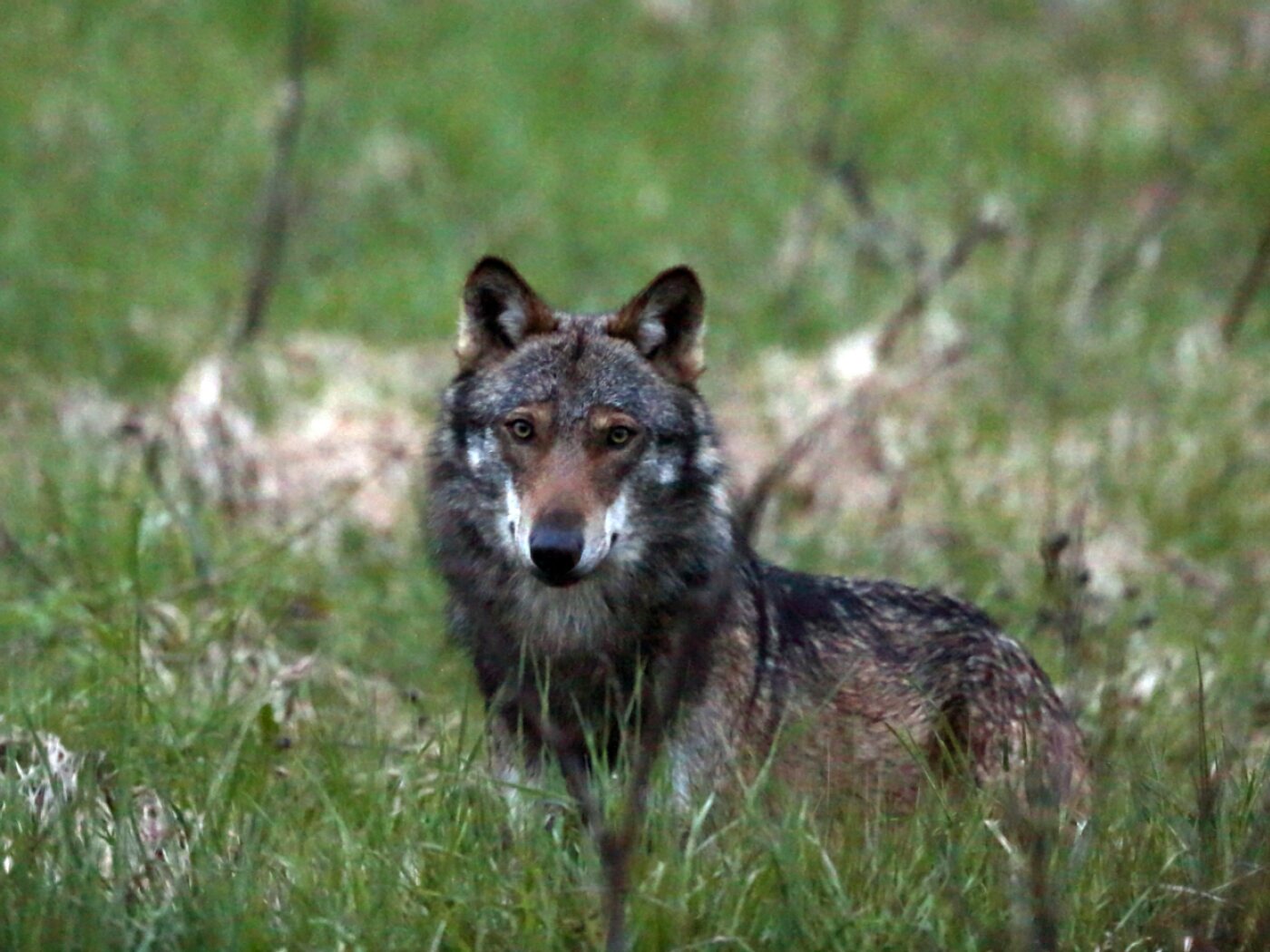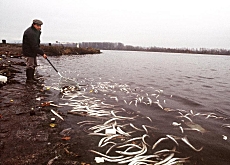Hope jumps at salmon’s return to Switzerland

The reappearance of a salmon near Basel for the first time in 50 years has raised hopes that the fish might be making a return to Swiss Rhine waters.
The International Commission for the Protection of the Rhine (ICPR), which has been working with the Swiss to improve water quality and remove barriers to spawning, said a milestone had been reached.
The female Atlantic salmon was reeled in by an amateur fisherman from the Birs, a tributary of the River Rhine. It was photographed and then released, the Federal Environment Office confirmed last week.
Olivier Schmidt, who works at Basel’s Natural History Museum – scene of a current exhibition on salmon – was passing by and rushed to help.
“We could hardly believe our eyes,” Schmidt said, according to reports. “A salmon in the Rhine or was the around 90-centimentre long fish simply a rather large trout?”
Salmon used to be common in the area but have not been seen in Basel since 1958.
The reason for the salmon’s disappearance – also in other regions of Switzerland – are hydroelectric plants built on the River Rhine which prevent the fish from reaching spawning zones.
Water quality problems, particularly after the Sandoz chemical accident near Basel, have also played a role.
Long swim
The fish is thought to have come to Basel from the Atlantic, says Erich Staub, head of the fisheries section at the federal office.
“We have been stocking for ten years but there are some migration barriers in between on the way up,” Staub told swissinfo.
“Now one of these individuals was lucky as it was going through the locks for the ships on the way up and it seems it followed these ships.”
Switzerland has been stocking up to 20,000 of the fish each year. Staub says it is important to have young fish because they produce pheromones – a smell – that the older ones follow.
The federal authorities believe that the appearance of the female salmon is proof that the species could return to Switzerland.
The individual could spawn in the next few months and there are particularly good breeding areas upriver from where she was caught, following measures to restore the Birs, officials said.
Water quality
Switzerland and its partners in the International Commission for the Protection of the Rhine (ICPR) have been working together to improve River Rhine water quality since the 1980s.
The ICPR stepped up its salmon activities in 1987, a year after a fire at a Sandoz warehouse caused a chemical spill which killed thousands of fish in the Rhine.
“The River Rhine has been ready for salmon coming back for at least ten years so water quality is not a problem,” Staub said.
The ICPR project, which also includes Germany, France, the Netherlands and Luxembourg, aims to have greater numbers of wild salmon back in the Rhine by 2020 by restoring habitats and removing barriers to migration.
In a statement, the ICPR called the Swiss news a “new milestone” and praised the “expensive measures” taken by the Rhine-bordering countries. More than 5,000 mature salmon have returned to parts of the Rhine watershed so far.
“But we must not stop at this stage,” warned ICPR president Jacques Sicherman. “Further efforts are required to increase the number of returning salmon and to develop a stable stock of salmon and other migratory fish in all waters adhering to this programme.”
Fish can’t get through
Staub says that there are still physical barriers stopping the salmon from returning to Basel.
One measure would be for hydroelectric plants to be equipped with filters to allow fish to pass through. Switzerland and the ICPR are currently looking for a solution, says the federal office.
Environment group WWF also hailed the salmon’s return and praised the long-term efforts of the Swiss government and Basel authorities. It has launched its own salmon programme.
The main problem at the moment, said the WWF in a statement, is French electricity plants in the Upper Rhine.
“We are calling for French electricity plants to permanently equip their watercourses with fish ladders or bypass watercourses to be permeable to allow the return of salmon to Switzerland,” said the group’s salmon expert Andreas Knutti.
swissinfo, Isobel Leybold-Johnson
The oceanic trout of the family Salmonidae, a highly prized game fish. It averages about 5.5 kg and is marked with round or cross-shaped spots.
Found on both sides of the Atlantic Ocean, it enters streams in the autumn to spawn. After spawning, adults may live to spawn again. The young enter the sea in about two years and mature in about four.
It is believed that it is above all the smell which guides salmon on their way upriver. Most natural obstacles, such as rapids and smaller waterfalls do not obstruct their migration.
Thus they gain the upper reaches of the river where they once hatched, normally a cool brook with a gravel bed.
(Source: ICPR, Encyclopedia Britannica)

In compliance with the JTI standards
More: SWI swissinfo.ch certified by the Journalism Trust Initiative












You can find an overview of ongoing debates with our journalists here . Please join us!
If you want to start a conversation about a topic raised in this article or want to report factual errors, email us at english@swissinfo.ch.